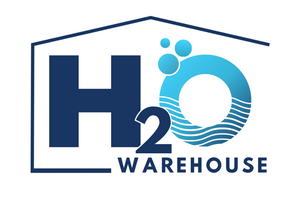Nitrate - Nitrite
Nitrate and Nitrite in Drinking Water: Risks, Sources, and Solutions
Nitrate and nitrite contamination in drinking water can pose significant health risks, particularly for infants, young children, and pregnant women. Understanding the sources, effects, detection methods, and solutions for nitrate and nitrite contamination is essential for homeowners and communities seeking to ensure access to safe and healthy drinking water.
The Risks of Nitrate and Nitrite Contamination:
- Health Concerns: Elevated levels of nitrate and nitrite in drinking water can pose health risks, particularly for vulnerable populations such as infants and young children. Nitrate can interfere with the blood's ability to carry oxygen, leading to a condition known as methemoglobinemia, or "blue baby syndrome," which can be life-threatening if left untreated. Nitrite can also pose health risks, including decreased oxygen delivery to tissues and potential carcinogenic effects.
- Sources of Contamination: Nitrate and nitrite contamination in water can originate from various sources, including agricultural runoff, sewage discharges, septic systems, and industrial activities. Excessive use of nitrogen-based fertilisers in agriculture is a significant contributor to nitrate contamination of surface and groundwater.
Detecting Nitrate and Nitrite in Water:
- Water Testing: Regular water testing is essential for detecting nitrate and nitrite contamination in drinking water. Homeowners can request comprehensive water quality testing from certified laboratories or utilise DIY test kits specifically designed to measure nitrate and nitrite levels in water.
- Nitrate-Nitrogen Levels: The concentration of nitrate-nitrogen, measured in parts per million (ppm) or milligrams per litre (mg/L), is used to assess nitrate contamination in water. Nitrate levels above the maximum contaminant level (MCL) of 10 mg/L, as established by regulatory agencies such as the Environmental Protection Agency (EPA), indicate potential health risks and require mitigation measures.
Solutions for Nitrate and Nitrite Removal:
- Reverse Osmosis Filtration: Reverse osmosis (RO) filtration systems are highly effective at removing nitrate and nitrite contaminants from drinking water. These systems utilise semi-permeable membranes to selectively remove dissolved ions, including nitrate and nitrite, providing clean and safe water for consumption.
- Ion Exchange Resins: Water softeners equipped with nitrate-specific ion exchange resins can effectively reduce nitrate levels in drinking water by exchanging nitrate ions with chloride ions. This process helps remove nitrate contaminants from water, improving water quality and safety.
- Point-of-Use Filters: Point-of-use (POU) filtration devices, such as activated carbon filters or specialty nitrate filters, can be installed at individual taps or faucets to reduce nitrate and nitrite levels in drinking water. These filters are suitable for addressing localised nitrate contamination issues and providing immediate access to clean water for consumption.
Conclusion:
Nitrate and nitrite contamination in drinking water pose significant health risks and require proactive measures to detect and mitigate exposure. By understanding the sources, effects, detection methods, and solutions for nitrate and nitrite contamination, homeowners can take steps to protect their families and ensure access to safe and healthy drinking water. Regular water testing, installation of nitrate-specific filtration systems, and adherence to regulatory guidelines are essential components of comprehensive nitrate and nitrite mitigation strategies. Collaborative efforts between homeowners, communities, agricultural stakeholders, and regulatory authorities are necessary to address nitrate and nitrite contamination and safeguard public health for future generations.
- Choosing a selection results in a full page refresh.

